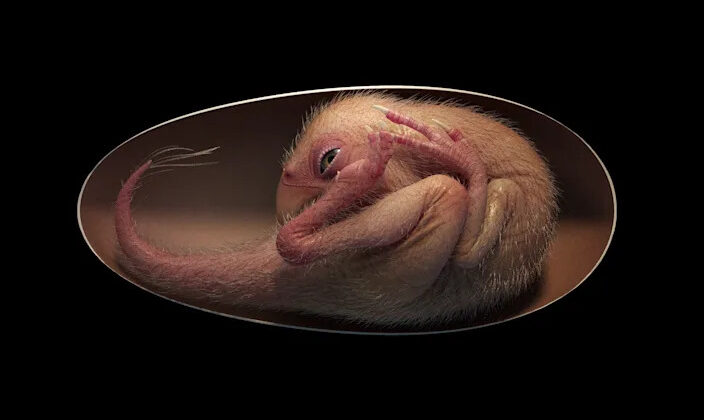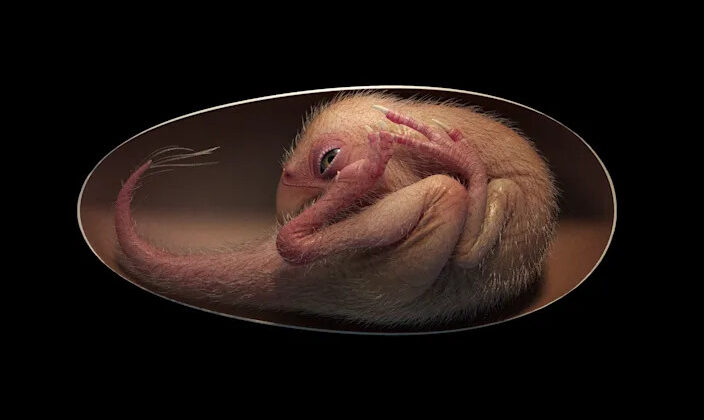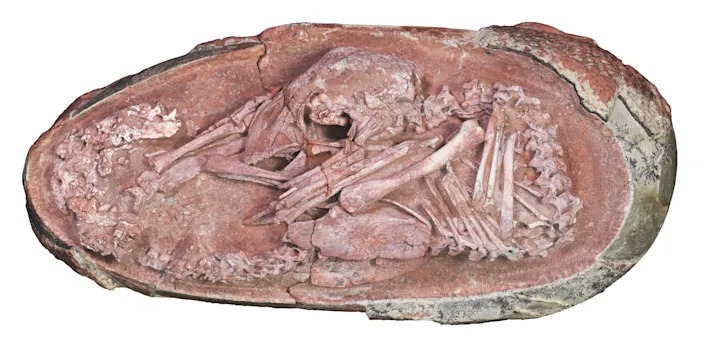
Inside a petrified egg, a well-preserved dinosaur embryo was discovered. Researchers obtained the preserved dinosaur embryo in Ganzhou, Jiangxi Province in southern China, in 2000.
According to a news release, researchers at Yingliang Group, a stone mining firm, believed it contained egg fossils but stored it for ten years. When the Yingliang Stone Natural History Museum was being built, boxes of found fossils were combed through.
In a press release, Lida Xing of China University of Geosciences, Beijing, said, “Museum workers identified them as dinosaur eggs and noticed some bones on the fractured cross section of one of the eggs.” They discovered an embryo inside, which they dubbed “Baby Yingliang.”
The embryo belongs to the theropod group, which includes the bird-like oviraptorosaurs. Theropod means “beast foot,” however theropod feet looked a lot like bird feet. Birds are derived from a minor theropod lineage.

Researchers discovered that the dinosaur took on a peculiar tucking position before hatching, which had previously been thought to be unique to birds. The research was published in the journal iScience.
According to the researchers, non-avian theropods may have evolved this habit. “Most non-avian dinosaur embryos are incomplete with disarticulated bones,” stated Waisum Ma of the University of Birmingham in the United Kingdom. “We were taken aback when we saw this embryo laying in a bird-like position inside a dinosaur egg. This stance had never been seen previously in non-avian dinosaurs.”

While fossilized dinosaur eggs have been discovered in the previous 100 years, finding a well-preserved embryo is extremely unusual, according to the experts.
The embryo’s position has never been seen in a non-avian dinosaur before, and it’s “particularly interesting since it’s evocative of a late-stage contemporary bird embryo,” according to the researchers.
The experts will continue to dig more into the unique species. They’ll try to visualize its interior anatomy. Some sections of its body are still encrusted with pebbles. Their discoveries might be used to additional fossil embryo research.

Leave a Reply